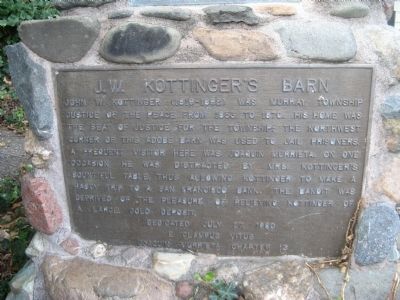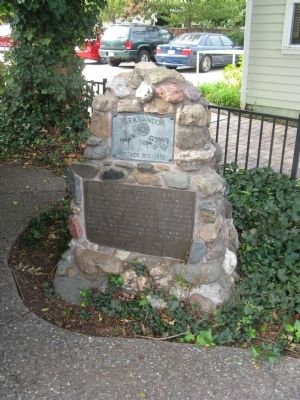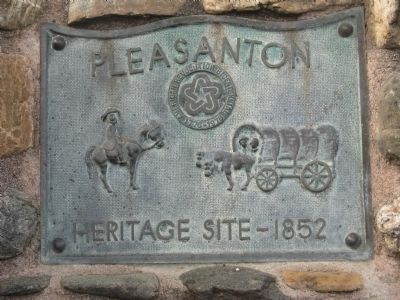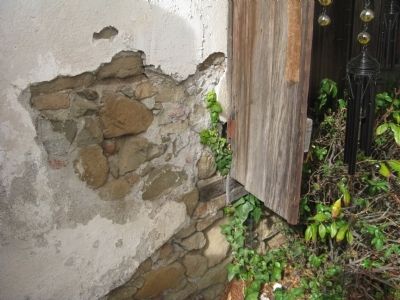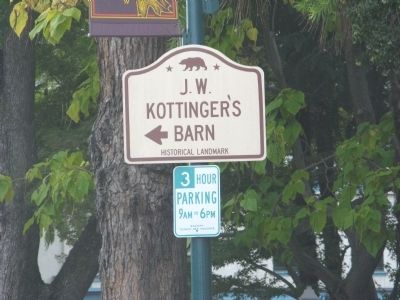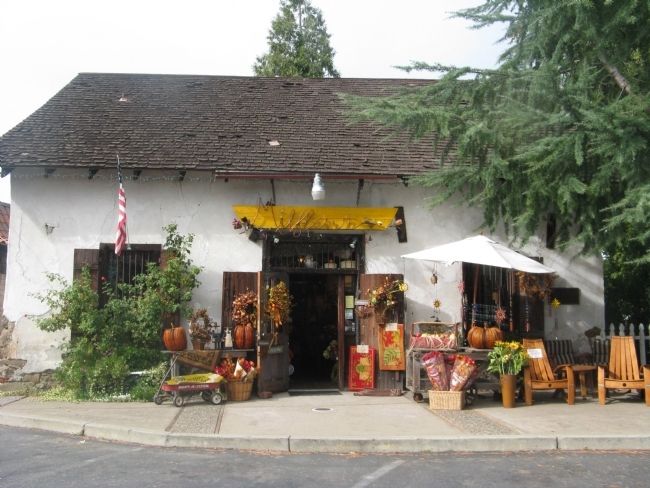Pleasanton in Alameda County, California — The American West (Pacific Coastal)
J. W. Kottinger’s Barn
Pleasanton Heritage Site - 1852
Erected 1980 by Joaquin Murrieta Chapter No. 13, E Clampus Vitus.
Topics and series. This historical marker is listed in these topic lists: Government & Politics • Notable Buildings. In addition, it is included in the E Clampus Vitus series list. A significant historical year for this entry is 1853.
Location. 37° 39.794′ N, 121° 52.349′ W. Marker is in Pleasanton, California, in Alameda County. Marker can be reached from Ray Street. Marker is located on the eastern side of the building, which now houses "Milfleur", a retail store. . Touch for map. Marker is at or near this postal address: 200 Ray Street, Pleasanton CA 94566, United States of America. Touch for directions.
Other nearby markers. At least 8 other markers are within walking distance of this marker. Kottinger’s Barn (here, next to this marker); Pleasanton Cheese Factory (about 600 feet away, measured in a direct line); The Pleasanton Hotel (about 700 feet away); The Roxy Theatre (approx. 0.2 miles away); The Pleasanton Sign (approx. 0.2 miles away); Larkin Locke House (approx. 0.2 miles away); Johnston Building (approx. Ľ mile away); Nevis Pavilion (approx. 0.3 miles away). Touch for a list and map of all markers in Pleasanton.
Regarding J. W. Kottinger’s Barn. This site was placed on the National Register of Historic Places in 1985. It's period of significance is listed as 1850-1874.
This site was listed with the California State Office of Historic Preservation on September 12, 1985.
Additional commentary.
1. Kottinger's Barn
From the Pleasanton Historic Downtown Walking Brochure:
John Kottinger's barn was constructed in 1852 and later became Pleasanton's first jail. It is one of the few remaining adobe structures in the area and is the only building in Pleasanton to be designated by the National Register of Historic Buildings. Kottinger became the county's first Justice of the Peace in 1853. Since there were no public buildings at the time, Kottinger used his home for court and his barn for a jail. After criminals were convicted in Kottinger's courts, bandits waiting outside overcame the lawmen and helped the outlaws escape on horseback. Kottinger then
had a tunnel built from the courthouse to the jail. Notable desperadoes such as Juaquin Murrietta, Juan Soto, and "Three Fingers" Jack Garcia were tried in Kottinger's court and escorted through the tunnel to jail.
— Submitted November 14, 2009, by Syd Whittle of Mesa, Arizona.
Credits. This page was last revised on June 16, 2016. It was originally submitted on November 14, 2009, by Syd Whittle of Mesa, Arizona. This page has been viewed 2,197 times since then and 42 times this year. Photos: 1, 2, 3, 4, 5, 6, 7. submitted on November 14, 2009, by Syd Whittle of Mesa, Arizona.
